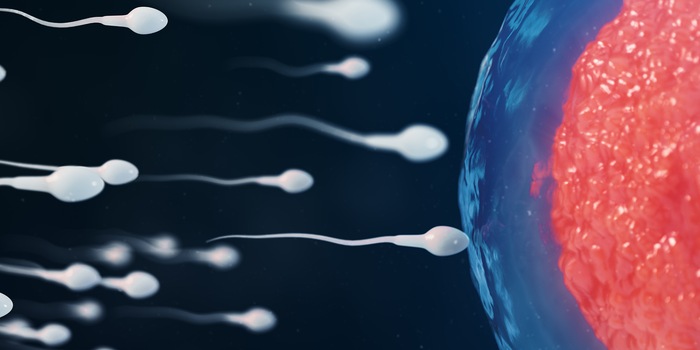
Oocytes are picky
The fastest sperm does not always win. Instead, the egg determines who is in the race in the first place. It is possible that such a mechanism is sometimes behind unwanted childlessness.
Human egg cells are apparently selective when it comes to sperm - and sometimes they even decide against those of their partner. This is the conclusion reached by a research group led by John Fitzpatrick from Stockholm University. In a study now published in the "Proceedings of the Royal Society B", the team investigated how sperm react to the chemical signals in the follicular fluid that surrounds the egg cell after ovulation. The study showed that the eggs were better able to attract sperm from certain men than from others. In addition, different egg cells appear to favour the sperm of different men and not always those of the woman's chosen partner. According to the researcher, this shows an active selection by the egg cell. The sperm have nothing to gain from favouring certain egg cells, explains Fitzpatrick: they have no choice.
In contrast, it can be worthwhile for egg cells to be selective and attract genetically particularly compatible sperm. However, the fact that they actually do this is a completely new idea, according to the press release. Female creatures have a whole range of ways to determine which males produce their offspring - and mate choice is just one option. In some waterfowl, for example, the vagina is equipped with "defence structures" that prevent unwanted sexual partners from fertilising the eggs. In other species, the females mate with many males and "select" the suitable sperm for fertilisation afterwards.
Luring agent
Whether primates also practise this form of sexual selection, known as "cryptic choice", was previously unclear. How the selection of sperm by the egg cell works in detail is also still largely unknown. The follicular fluid contains a number of substances that attract sperm, including progesterone, which is already produced in the ovary and whose increasing concentration towards the egg presumably guides the sperm to their destination. However, the egg itself also produces its own attractants, about which little is known so far. According to the research group, the main aim of the research is to improve artificial insemination; in addition, such results could help to clarify why some couples remain childless for no recognisable reason.
Spectrum of science
We are partners of Spektrum der Wissenschaft and want to make well-founded information more accessible to you. Follow Spektrum der Wissenschaft if you like the articles.
[[small:]]
Experts from science and research report on the latest findings in their fields – competent, authentic and comprehensible.
From the latest iPhone to the return of 80s fashion. The editorial team will help you make sense of it all.
Show all